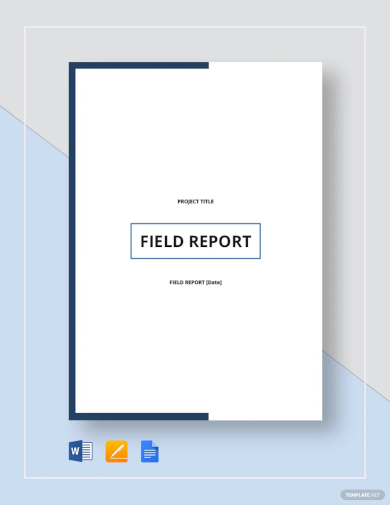

A Field Report is an essential document for capturing and conveying real-world data and experiences. This guide, complete with insightful report examples, will navigate you through the process of creating comprehensive and effective field reports. Ideal for professionals in research, anthropology, sociology, and various field-based disciplines, this guide emphasizes the importance of observation, analysis, and clear communication. Learn to craft field reports that are not only informative but also engaging, making your on-site observations valuable and impactful.

Most of the time when you are given a practical task, you are required to submit a field report based on your observation and findings of the given task. In order to provide a good field report, you must know how to make one by following the format supplied with suitable information about it. Take time to read the following details.
















A field report allows researchers to apply theories and analysis of what they have learned inside the classroom and during practical observation outside of the classroom. Its sole purpose is to describe what you have observed in the environment, may it be a specific person, place, thing or occurrence. Field reports contain interpretations from the findings or the data that has been gathered.
These are often assigned in fields where it is possible to apply the relevant theories and concepts. It can be in the field of social sciences, criminal justice, education, health care professions, architecture and even in services related to electrical operations and more. You are assigned to create a field report to test whether you have applied in real life the things that were taught to you or whether you have understood the concepts of an existing matter. It even helps you develop your skills in collecting data in order to obtain evidence that practices professionalism contributing to the theories and concepts learned.
WHAT? – describes the observation
For example: What is the effect of online classes to students during the COVID-19 Pandemic?
WHERE? – refers to the location of the observation
WHEN? – refers to the time and date that the observation was conducted
For example: The observation was conducted on the 7 th day of March 2020.
WHO? – refers to the information of participants
For example: All students of different levels who are studying under synchronous learning.
WHY? – refers to the reason why you conducted the observation
For example: To determine the effectiveness of online classes
When writing a field report, you have to record every aspect of your observation. Follow the five W’s that are listed above. Find time to make explanations of the things that you have observed and stick into the report’s objectives so that you will be always guided.
A survey report summarizes collected data responses, typically quantitative, from structured questionnaires. A field report details direct observations and experiences from on-site research, often qualitative.
The purpose of a field report is to record and analyze observations and experiences gathered during fieldwork, providing detailed insights and contextual understanding of the studied subject or environment.
Writing a fieldwork report involves describing the site and research activities, recording observations, analyzing findings, and reflecting on the experience’s significance, all presented in a structured format.
Just like conducting a research study, it is quite difficult to write a field report. You just have to apply the methods and techniques to make it easier, more simple and understandable.